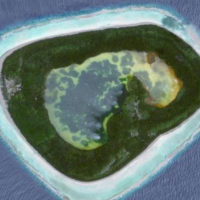
A grant of more than $800,000 has been awarded to the American Samoa Department of Marine and Wildlife Resources (DMWR) to help get rid of non-native predators on Swains Island.
The grant of $864,300 comes from the National Fish and Wildlife Foundation’s America the Beautiful Challenge and is for project, “Swains Island (AS) Tropical Ecosystem Restoration Planning for Invasive Mammal Eradication and Rainforest Realignment”.
In announcing the grant award, DMWR Director Taotasi Archie Soliai commended the Wildlife Division Biologist, Adam Miles, and his team for taking the lead in this application.
Soliai said, “Of the 527 proposals nationwide that were submitted, only 55 were approved and one of those is for American Samoa. This is a great funding opportunity that will help our efforts to eradicate these non-native predators that continue to impede conservation efforts on Swains island.”
The competitive grant awards were made possible with funding from the Bipartisan Infrastructure Law, other federal conservation programs and private sources. Additional support this year was provided by the Bezos Earth Fund.
The 2022 ATBC request for proposals received an unprecedented response, with applicants submitting 527 proposals requesting a total of $1.1 billion.
The Swains Island project is a collaboration between DMWR and Island Conservation (IC), a Santa Cruz, CA based non-profit that specializes in preventing island animal extinctions by removal of non-native predators such as rats and cats.
DMWR and IC work closely with Representative Alex Jennings, the Jennings family, the National Sanctuary of American Samoa, and the United States Fish and Wildlife Service to plan the eradication of invasive rats from Swain’s Island to benefit seabirds and the marine ecosystem.
The project will create an operational and reforestation plan for long-term protection that supports at-risk terrestrial and marine species, and reestablishes native flora on the 460-acre island to benefit the entire island ecosystem.
The ultimate goal is to increase seabird populations by removing invasive rats and cats from Swain’s Island and improving seabird habitat by restoring areas of coconut plantation into native habitat.
The long-term plan is to establish a research center on Swain’s Island to study the recovery of the land and marine ecosystems, and to provide an educational opportunity for high school and college students interested in studying marine and wildlife in American Samoa.




